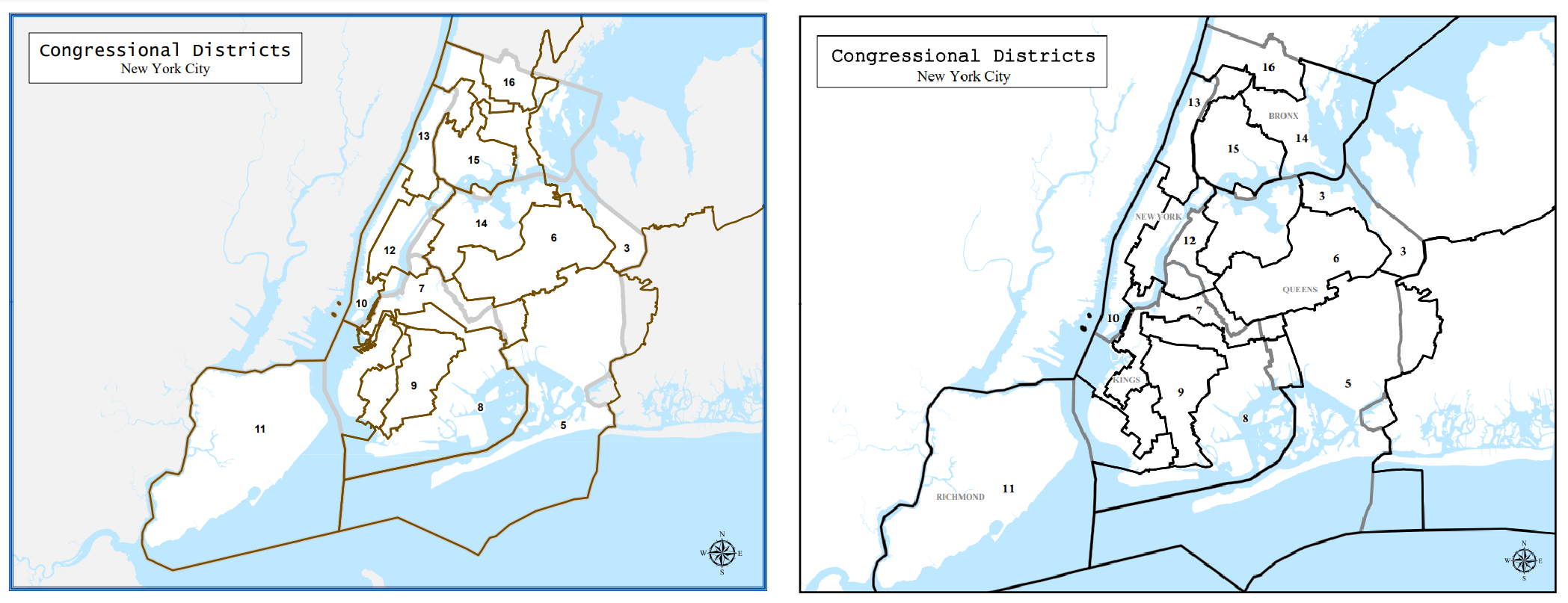One of New York City’s wealthiest communities has been merged into the 15th congressional district—formerly one of the poorest congressional districts in the country, sparking fears that the new change will dilute the voices of Black, Hispanic and lower income voters.
South Bronx Unite founder Mychal Johnson is one of many community members concerned about the change. He worries about Riverdale having greater influence in the new district as opposed to the various communities in the South Bronx, which he believes need it more.
“It seems hard to come from looking at this district, with some of the economic woes that it has, coupling in the congressional district with Riverdale,” said Johnson.
The interests in the two regions are vastly different, Johnson said, citing as an example the industrial facilities in Hunts Point. In Hunts Point, air pollution ranks the highest in the city, with over 9.8 micrograms per cubic meter of air pollution, causing harm to children and the elderly. The Riverdale section of the North Bronx does not have these issues, he noted, pointing to low hospitalization rates and cleaner air..
Household income is another area of stark contrast. In Riverdale, the median income is $62,300, compared to the $25,500 median income in Mott Haven and Melrose. The poverty rate in Riverdale is 16.5% while Mott Haven’s rate is 39.6%.
Rep. Ritchie Torres, who has represented the 15th congressional district since 2021, is expected to have no trouble being re-elected in the newly reshaped district. In a statement to the Mott Haven Herald and Hunts Point Express, Torres’ office said there should be no cause for concern about the reshaped district.
“The congressman grew up poor—in public housing, as an asthmatic—for most of his life,” the statement said. “The issues of the South Bronx—from housing insecurity and food insecurity to mental illness and substance abuse—are not abstractions to him; these are struggles he has lived in his own life. He is one of the few elected officials in the nation to speak openly and honestly about his struggles with depression, which is an epidemic in the South Bronx.”
Further, Torres’ office said, his district office will remain in its present location at 1231 Lafayette Ave. in Hunts Point.
Fordham political science professor and urban studies director Annika Hinze said she believes the new congressional district is the result of gerrymandering, which she defined as “a manipulation of the boundaries of voting districts, in order to create advantages for certain constituent groups.”
Congressional districts are mapped out by the state legislature according to census data. New York initially had authorized a nonpartisan redistricting commission to propose revisions based on the 2020 census, but Democrats in charge of both houses of the legislature decided to override those recommendations and draw their own district lines.
Hinze, herself a voter in the 15th congressional district, said this allowed partisan politics to create voting advantages for Democrats statewide. The new lines are expected to put Democrats in control of 22 out of 26 congressional seats in New York. On occasion, she said, lines are drawn without regard for the needs and desires of constituents in districts.
After Gov. Kathy Hochul signed the new changes into law, Republicans sued the state, claiming gerrymandering.
Riverdale was previously in the 16th congressional district, represented by Jamaal Bowman. In the new map, the 16th district boundary has moved northward.
“The new 15th congressional district would combine some very different demographics—Riverdale and Fieldston on the one hand, which are over 60% white, around 17% Hispanic, and only 7% Black, compared to the rest of the Bronx, where the non-Hispanic white population is only around 10%—with over 50% Hispanic, and over 40% Black residents,” Hinze said.
Both Riverdale and the South Bronx have overwhelmingly more Democratic voters than Republican. However, a report by Politico suggests that the new congressional district will make the area slightly more conservative.
Riverdale also has higher voter turnout compared to the South Bronx, which sometimes determines which issues get more attention. During the 2020 election, around 48.4%-54.5% of community members in Mott Haven and Hunts Point participated, while around 61.0%–66.8% of Riverdale and Fieldston did.
“The people of the South Bronx will likely not only lose funding but also much political influence,” Hinze predicted. Torres’ office disagreed, saying no federal funding would be lost to the South Bronx as a result of the redistricting.
The redistricting change was a hot topic during the Feb. 24 monthly meeting of Community Board 1, based in Mott Haven. During public comment, one community member condemned the governor for approving the new map, noting that merging one of the wealthiest communities with the poorest will not help the South Bronx. And as more community members logged onto Zoom to talk about the redrawn district, Chairperson Arline Parks attempted to address their concerns.
“It happened, it’s real,” Parks said. “We need to have someone from Congressman Torres’ office come before the board and basically explain to this district what the boundaries are for the congressional district, what the implications are for funding, now that we can no longer claim we are the poorest congressional district in the country.”

